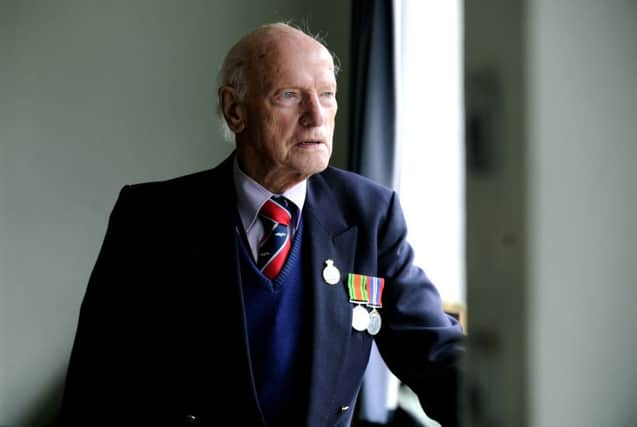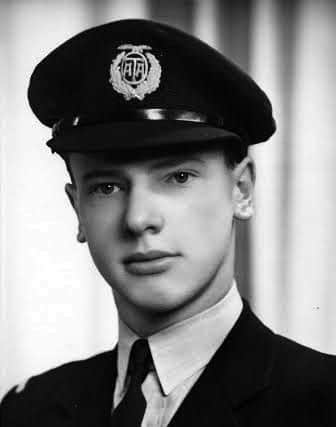The unsung Second World War heroes and heroines of the air


IT was 1933 when a young Martin Nicholson’s passion for aircraft was kindled.
“I was mad keen on aeroplanes and when my father took me on a flight at Yeadon that convinced me,” he says. But little did he know at the time that he would go on to fly some of the most iconic aircraft of the 20th Century.
Advertisement
Hide AdAdvertisement
Hide AdThe Battle of Britain looms large in the nation’s collective memory and will come into focus again this summer when we mark 75 years since the famous “Few”, as Winston Churchill memorably called them, fought off the Luftwaffe and in doing so kept the country free from invasion.


But there is another, lesser known, wartime aviation story that deserves to be more widely recognised. Last weekend, a memorial plaque in honour of the airmen and women of the Air Transport Auxiliary (ATA) was unveiled at the Yorkshire Air Museum, based at Elvington, which went some way to doing that.
It was unveiled by 90 year-old Martin, from Otley, one of only a dozen ATA aircrew still known to be alive.
The ATA was a civilian organisation set up by Gerard d’Erlanger, director of the British Overseas Airways Corporation, under the auspices of the Air Ministry.
Advertisement
Hide AdAdvertisement
Hide AdIt began operation in 1939 and over the course of the war was responsible for ferrying more than 309,000 aircraft between factories and front-line airfields, freeing RAF pilots for operational duty.
By 1945 the group had pilots from 22 countries, including as far away as Chile, South Africa, Australia and the United States.
Pilots were trained on certain classes of aircraft, such as single engine or twin engine planes. Not only were they often flying in aircraft they had never laid eyes on before, they usually flew alone and without radio communication.
To help them each pilot was issued with their own Ferry Pilots Notes, a basic instruction manual on all the aircraft used by the RAF and allied services during the war.
Advertisement
Hide AdAdvertisement
Hide AdThey flew aircraft all over the British Isles day after day, hence the ATA’s unofficial motto, “Anything Anywhere”. But it was a job fraught with danger and 173 members lost their lives in the line of duty during the war – including Amy Johnson, the pioneering Hull-born aviator, who died when her aircraft crashed into the Thames estuary in bad weather in 1941.
More than 1,300 pilots served with the ATA and most survived the war, including Martin Nicholson who was just 19 when he joined at the beginning of 1944.
He had previously been taught how to fly by RAF instructors in Tiger Moths, De Havilland’s iconic biplane, and now he was thrown in at the deep end.
“You arrived at an airfield and were expected to fly an aircraft that you may never have seen before,” he says. “You spent 10 minutes going through everything and then you got a helpful start and took off. You circled for a short time to make sure you had command of the aircraft and that it was working properly, because on many occasions we were test pilots, and then you were off.”
Advertisement
Hide AdAdvertisement
Hide AdMartin made hundreds of wartime flights, mostly in single engine aircraft, and piloted the likes of Hurricanes, Mustangs, Barracudas, Hellcats of the Fleet Air Arm and, most famously of all, Spitfires.
“We were like a Jack of all kinds whereas a service pilot was supposed to be master of one, that was the basic difference,” he says. “But every aircraft that appeared in the sky was at some time or other flown by the ATA.”
His favourite aircraft, simply from a flying point of view, was a Spitfire. “You could sit in the thing and somehow with the slightest movement it did what you wanted it to do.
“There was no brute force, it was just beautifully balanced and it was a sheer delight to fly,” he says. “As a purposeful aeroplane from the Air Force’s point of view the Mustang, I’m afraid, was better. It was a war machine and did its job very well.”
Advertisement
Hide AdAdvertisement
Hide AdThere was no pattern to their job and they were expected to fly in all kinds of weather. “We didn’t use any wireless and we navigated by a compass and a map only, because many of the aircraft weren’t fitted with it for a start.
“Also, some of the airfields to which we had to go were secret airfields and when you got there it would just be a clearing between trees. There might be a sheep in your way in which case you would have to circle and get it to move.”
The Ferry Pilots Notes were often the only information they had, providing details such as take-off speed, although sometimes even this wasn’t much help.
“One morning I went to get an aircraft only to find that it was marked in a different country’s insignia,” Martin recalls.
Advertisement
Hide AdAdvertisement
Hide Ad“I was told to take it from A to B and I had an escort of two Spitfires so that I wouldn’t get shot down. That was OK but when I got in the thing the instrumentation was all in Arabic – and this was an aircraft I’d never flown before.”
Looking back he wonders how they managed to achieve what they did. “The differences between the aircraft were many and compound and to this day I don’t quite know how we did it, because it was flying by the seat of your pants. You just got in and you did it, like the first guys who ever flew.
“There was no time to be scared. What you were doing was so unbelievable that you just went ahead and did it.”
He remembers being asked to ferry a VIP passenger on one flight. “An army general arrived and got on board. I didn’t know who he was but I took him down south and dropped him off and I found out some time later that he was General Creagh, second in command to Monty [Field Marshal Montgomery].
Advertisement
Hide AdAdvertisement
Hide Ad“He had to travel down there damn quick and I was the only person available at the time to take him,” he says, chuckling at the memory.
Martin survived a couple of near misses, though, including one with Hitler’s so-called “buzz bombs” or “doodlebugs”.
“I was flying a twin engine Anson and we had 11 people on board,” he says.
“We were flying somewhere in Sussex when suddenly literally on my wing tip, at the same level and going in the same direction, was a V1 rocket.
Advertisement
Hide AdAdvertisement
Hide Ad“It came past at three times our speed and we all saw it but I couldn’t do anything about it.”
As well as running the daily gauntlet of enemy aircraft, there was also the risk of being mistakenly shot out of the sky by your own side.
“The only damage I ever had to my aircraft was through friendly fire. I had a small training aircraft and I was flying up the Irish Sea and came over a convoy of ships coming into Liverpool and they fired at me and put a hole in my wing.”
It shows how dangerous the job could be for these wartime stalwarts. But if the story of the ATA has been overlooked over the decades since, the aircrews did at least get some recognition at the time.
Advertisement
Hide AdAdvertisement
Hide AdWhen the organisation was disbanded in November 1945, Lord Beaverbrook, first Minister of Aircraft Production, paid the following tribute: “Without the ATA the days and nights of the Battle of Britain would have been conducted under conditions quite different from the actual events... They were soldiers fighting in the struggle just as completely as if they had been engaged on the battlefront.”
Today, as we approach the 70th anniversary of the end of the Second World War we owe Martin, and all those brave men and women of the Air Transport Auxiliary, a debt of gratitude that can never truly be repaid.